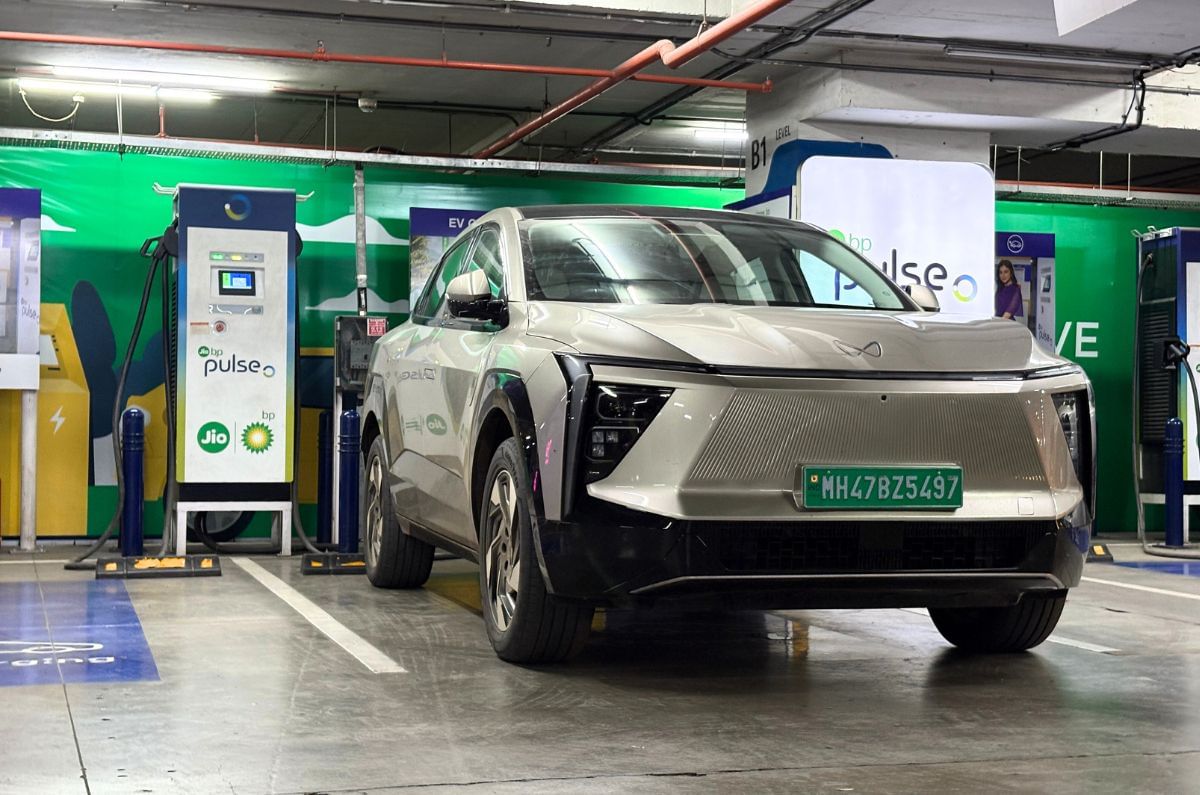
Mahindra’s flagship electric SUV, the XEV 9e, is priced between Rs 21.90 lakh and Rs 31.25 lakh (ex-showroom, India), and it comes with two battery options: a 59kWh unit and a larger 79kWh unit, using a 400V to 465V architecture. We’ve now subjected the XEV 9e Pack Three 79kWh version to our real-world range test, and the results are as follows. We’ve also tested the Mahindra BE6, and you can find out just how efficient it is here.
- Tests were conducted in the most efficient ‘Range’ drive mode
- XEV 9e 79kWh version weighs 2,201kg
Mahindra XEV 9e real world range
The Mahindra XEV 9e with the 79kWh battery boasts a claimed range of 656km on the Indian MIDC cycle and 533km on the WLTP cycle, while Mahindra says it’s good for a 500km-plus real-world range.
Before setting off on our range test, we topped up the battery to 100 percent and kept the SUV in its most efficient ‘Range’ drive mode. In the city, with the regenerative braking set to Level 3, the XEV 9e returned 5.38km/kWh, extrapolating to a real-world range of 425km. Its heavy 2,201kg kerb weight, ambient temperatures touching 40degC and the constant stop-go movement in traffic led to a less-than-expected city efficiency.

On our highway loop, the 9e continued in Range mode, but regen was set to Level 1 to allow it to coast at higher speeds. As a result, it managed an efficiency of 6.18km/kWh, giving it a real-world highway range of 488km. Combined, the XEV 9e 79kWh version has an efficiency of 5.78km/kWh, or a real-world range of 456km.
Autocar India’s range testing
Before our real-world range test, the battery of our test car is fully charged, and we maintain tyre pressures as recommended by the manufacturer. The car was driven in a fixed loop in the city and on the highway, and we maintained certain average speeds. At the end, we calculated the range based on the percentage of charge consumed. Throughout our test, the climate control was set to 22 degC, the fan speed was set to auto, and other electricals like the audio system, lights and ventilated front seats (if equipped) were used when required, just like how a regular user would. We take pride in our testing data, which isn’t just consistent but also gives users an accurate indication of what they can expect in the real world.
Also See:

